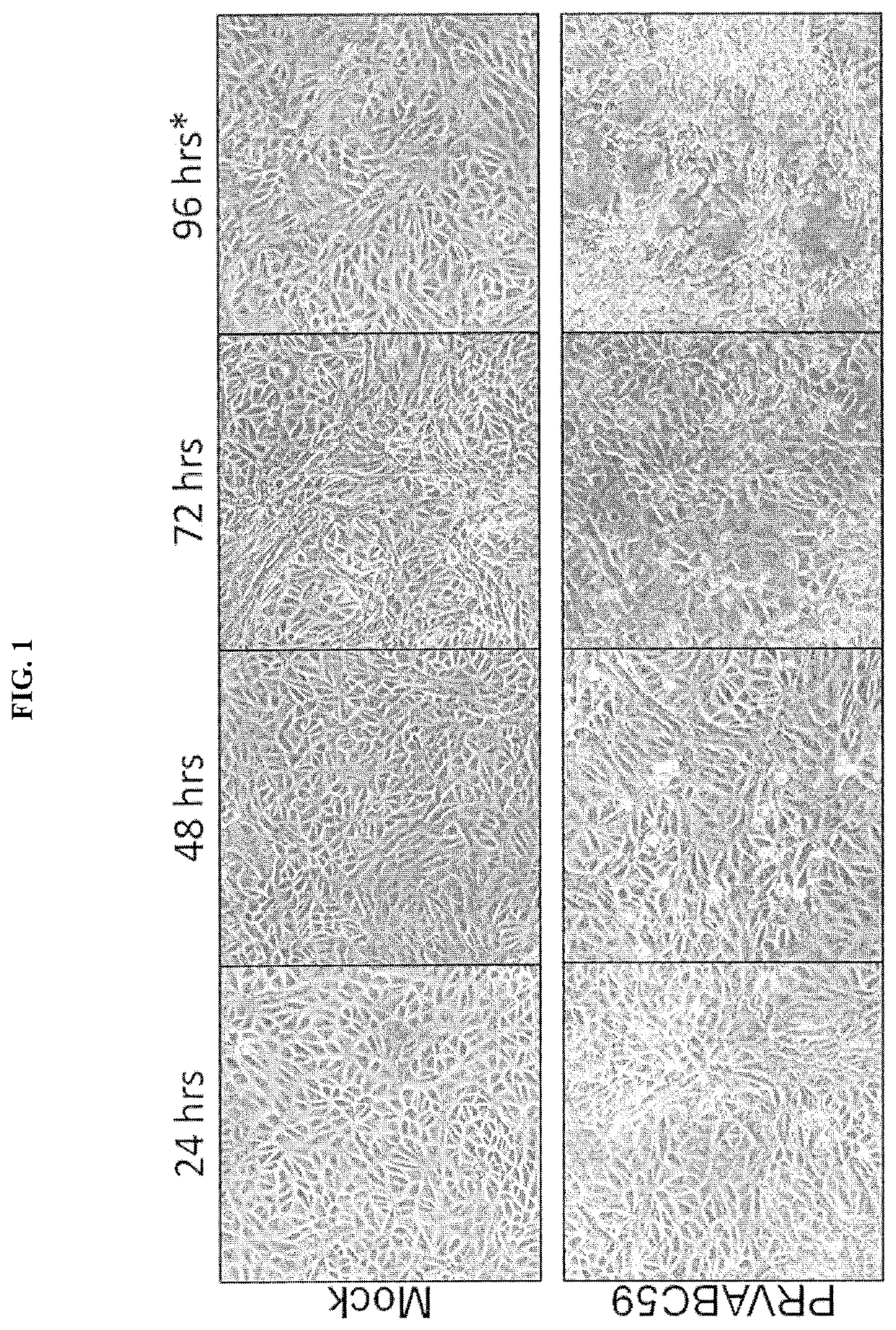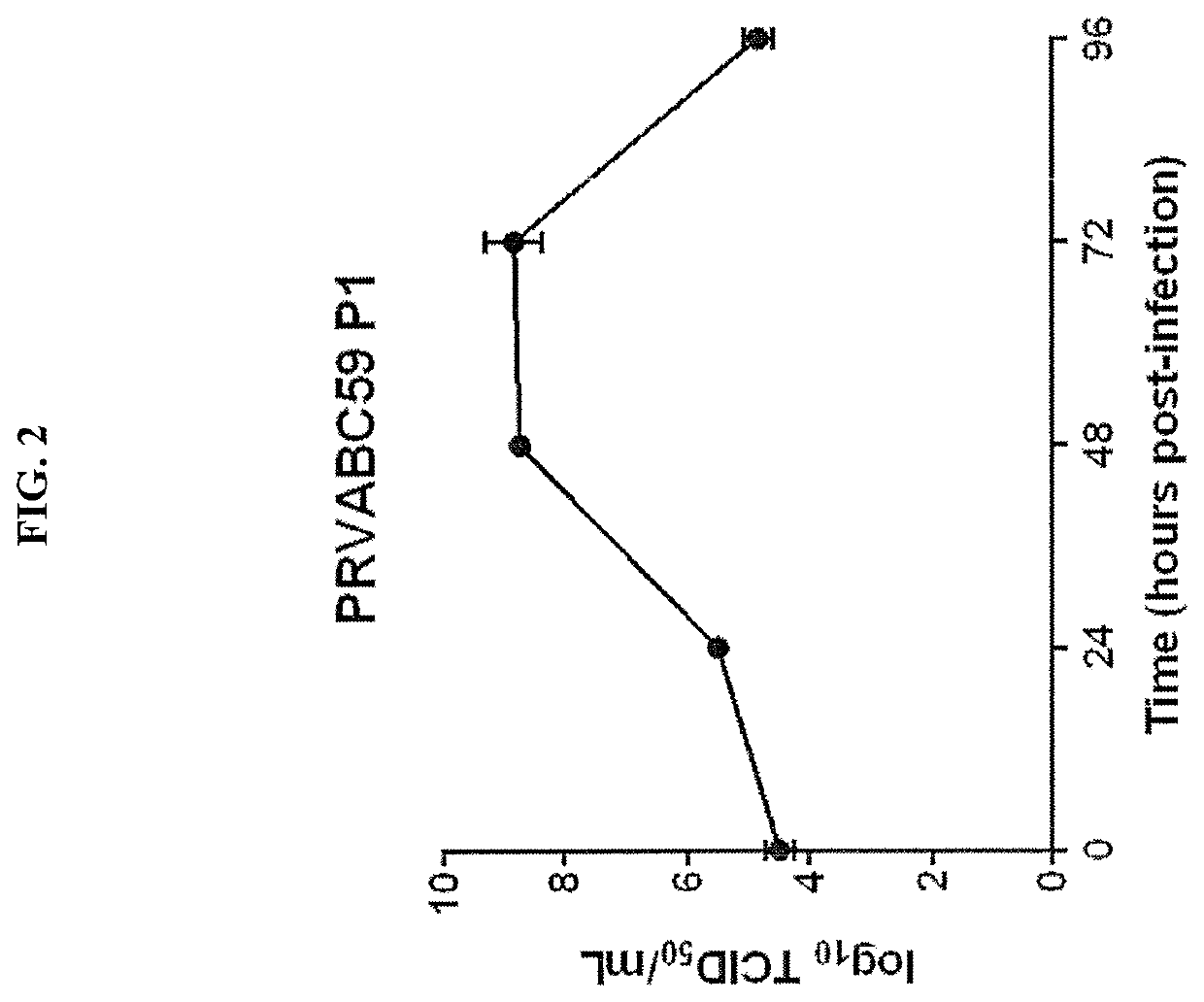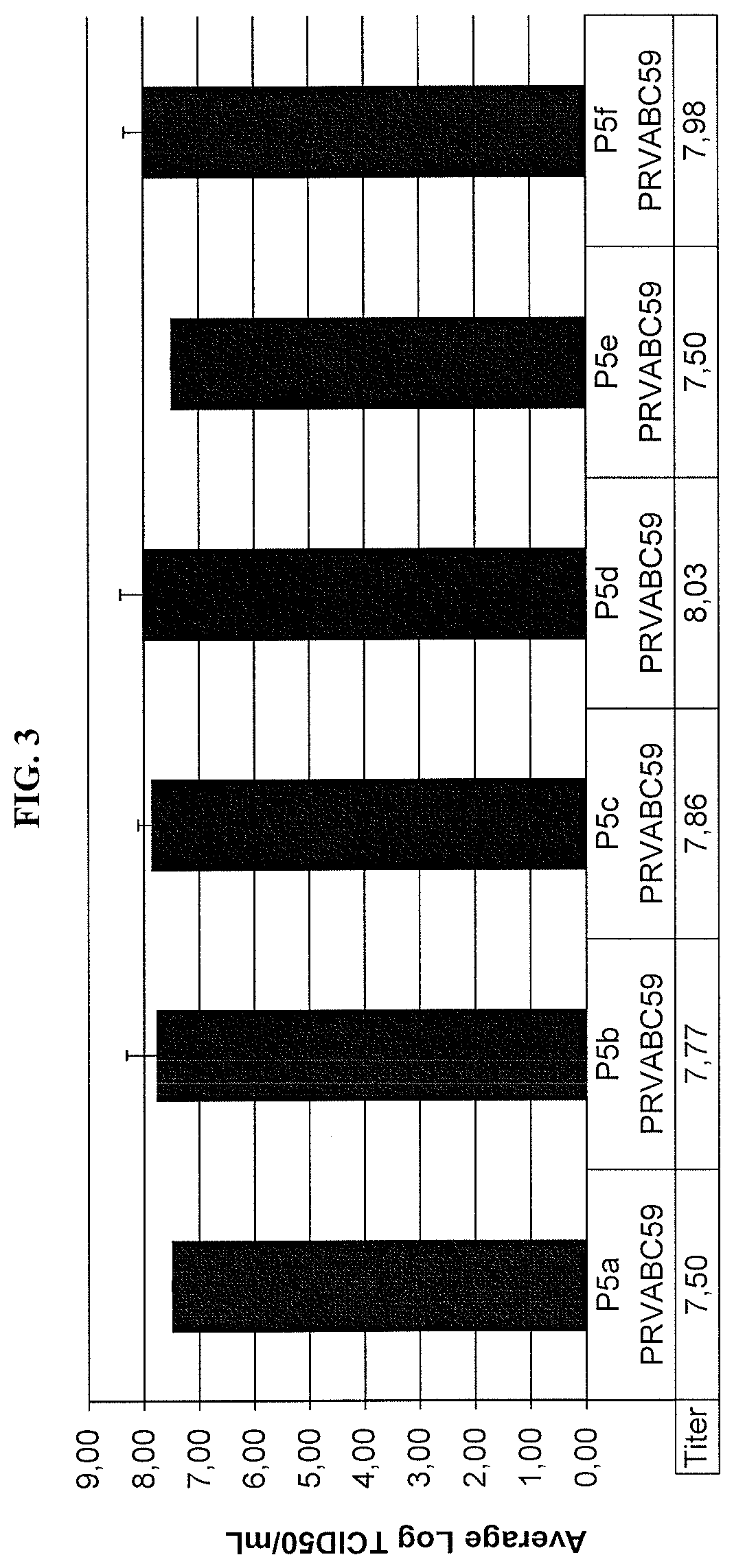Method for inactivating zika virus and related methods
a zika virus and inactivation technology, applied in the field of methods for inactivating a zika virus, can solve the problems of less desirable two-plasmid system for the development of a zika vaccine, and achieve the effect of high sensitivity and efficient inactivation
- Summary
- Abstract
- Description
- Claims
- Application Information
AI Technical Summary
Benefits of technology
Problems solved by technology
Method used
Image
Examples
example 1
ka Virus Strain Generation
[0345]This example describes the production of Zika virus (ZIKAV) strains with a known research history.
Materials and Methods
Vero Cell Maintenance
[0346]One vial of WHO Vero 10-87 cells was rapidly thawed in a water bath and directly inoculated into 19 mL pre-warmed DMEM (Dulbecco's modified minimal essential medium) containing penicillin-streptomycin, L-glutamine 40 mM, and 10% FBS in a T-75 cm2 flask at 36° C.+ / 2° C., at 5% CO2. Cells were allowed to grow to confluency and subcultured using TryplE. This flask was expanded to two T-185 cm2 flasks, grown to confluency and subcultured to 31 xT-185 cm2 flasks and grown until the cells reached 100% confluency. Cells were harvested by trypsinization, centrifuged at 800×g for 10 minutes, and resuspended in DMEM containing 10% FBS and 10% DMSO at a concentration of 1.9×107 cells / mL. One vial of the Vero cells was rapidly thawed and resuscitated as described above into a T-75 cm2 flask. These were subcultured twice...
example 2
al Immunogenicity and Efficacy of a Purified Inactivated Zika Virus Vaccine (PIZV) Derived from the P6b and P6e Strains
[0367]The following example describes the preclinical immunogenicity and efficacy in CD1 and AG129 mice of an inactivated Zika virus vaccine (PIZV) derived from the P6b and P6e strains. As described in Example 1, six clones were generated from the epidemically relevant PRVABC59 strain, and two (P6b and P6e) were chosen for further preclinical immunogenicity and efficacy studies.
Materials and Methods
Purification, Inactivation and Formulation of a Zika Virus Vaccine
[0368]A lot of inactivated ZIKAV vaccine, suitable for use in preclinical immunogenicity and efficacy studies, was generated and characterized. Virus was amplified from the P6b and P6e strains by infecting flasks of confluent Vero cells at a MOI of 0.01. Virus was adsorbed for 1 hour at 36° C.±2° C. / 5% CO2. Following adsorption, 20 mL of cDMEM-0%-FBS was added to each flask, and incubated at 36° C.±2° C. / 5%...
example 3
al Assessment of the Phenotype of the P6a and P6e Strains
Materials and Methods
[0395]AG129 mice (lacking interferon α / β and γ receptors) are susceptible to ZIKV infection and disease, including severe pathologies in the brain. 14-week-old AG129 mice were intraperitoneally infected with 104 and 103 pfu of the ZIKV passage 6 clones a and e.
[0396]Mice were weighed and monitored daily (up to 28 days) for clinical signs of illness (weight loss, ruffled fur, hunched posture, lethargy, limb weakness, partial / full paralysis). Additionally, analysis of viremia was performed by plaque titration of serum samples collected three days post-challenge as described in Example 1.
Results
[0397]Infection with preMVS P6e resulted in 100% mortality (median survival time=12.5 days), while infection with preMVS P6a resulted in only 33% mortality (median survival time=undetermined) (FIG. 22). In agreement with this, preMVS P6e infected mice showed greater weight loss as compared to PRVABC59 P6a infected mice...
PUM
| Property | Measurement | Unit |
|---|---|---|
| temperature | aaaaa | aaaaa |
| temperature | aaaaa | aaaaa |
| time | aaaaa | aaaaa |
Abstract
Description
Claims
Application Information
 Login to View More
Login to View More - R&D
- Intellectual Property
- Life Sciences
- Materials
- Tech Scout
- Unparalleled Data Quality
- Higher Quality Content
- 60% Fewer Hallucinations
Browse by: Latest US Patents, China's latest patents, Technical Efficacy Thesaurus, Application Domain, Technology Topic, Popular Technical Reports.
© 2025 PatSnap. All rights reserved.Legal|Privacy policy|Modern Slavery Act Transparency Statement|Sitemap|About US| Contact US: help@patsnap.com



